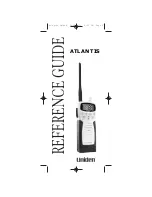
SAFETY NOTES
Please read through the instructions carefully before using this radio. Pay much attention to all
precautions and warnings to ensure the safest operation.
WARNINGS
Do not fly in the rain or at night. Water can
permanently damage many of the components
in the radio system, possibly causing loss of the
control and a crash.
Only fly at designated R/C flying fields. Fly at
safe distances away from other people, objects
in the air, buildings, electrical lines, or any other
object which could possible impede safe flying.
Failure to do so could cause a crash and
possibly bodily harm and physical damage to
other property.
Always test the radio system before use. Make
sure the operation of each channel in the radio
is in the proper direction. If a channel does not
accurately respond according to the transmitter
input, do not fly the model. Check for and
correct improperly functioning equipment
before use. Failure to ensure proper radio
operation before flight could result in a crash.
During flight preparations, be certain to place
the transmitter on its back when on the ground,
to prevent it from accidentally falling over and
inadvertently moving the throttle stick to high
speed.
Do not allow fuel or oil on the plastic parts.
Some plastics may melt when exposed to such
material.
Before turning on the transmitter, adjust the
throttle stick to minimum speed position. After
stopping the engine turn “OFF”, the transmitter
power switch, then turn “Off” the transmitter
power switch. Failure to follow this order could
cause the engine to go to full throttle and cause
an injury.
Do not make adjustments to the radio system
while the engine is running unless absolutely
necessary. Failure to do so could cause the
engine to accidentally go to high speed and
cause an injury.
The transmitter is designed for use with 8 dry
cell (Non-rechargeable) AA size alkaline
batteries or rechargeable NiMh cells (available
separately). If using rechargeable batteries,
please follow the charging instructions supplied
by the manufacturer of the batteries.
Never attempt to charge non-chargeable
alkaline dry cell batteries as there is a risk of
fire, damage and personal injury.
Always full charge the transmitter and receiver
battery before each flight. Failure to do so could
cause an inadvertent power failure and a crash.
Use the charger supplied with this supplied with
this radio. If using another charger, do not
overcharge the battery, as it could cause burns,
fire, injury or other equipment damage. Do not
short circuit the battery terminals, as arcing,
overheating or fire could result.
Do not leave the radio system, batteries, model
helicopter or other equipment within the reach
of children.
Do not overheat or throw the batteries into a fire.
Leaking electrolyte from the battery could
cause injury, such as burns or blindness. In
case of emergency, immediately flush you eyes,
skin or cloths with plenty of water and see a
doctor. Recycle the battery when no longer in
usable condition.
Store the radio with all NiMh batteries in the
discharged state and be certain to full charge
the batteries just prior to use.

























